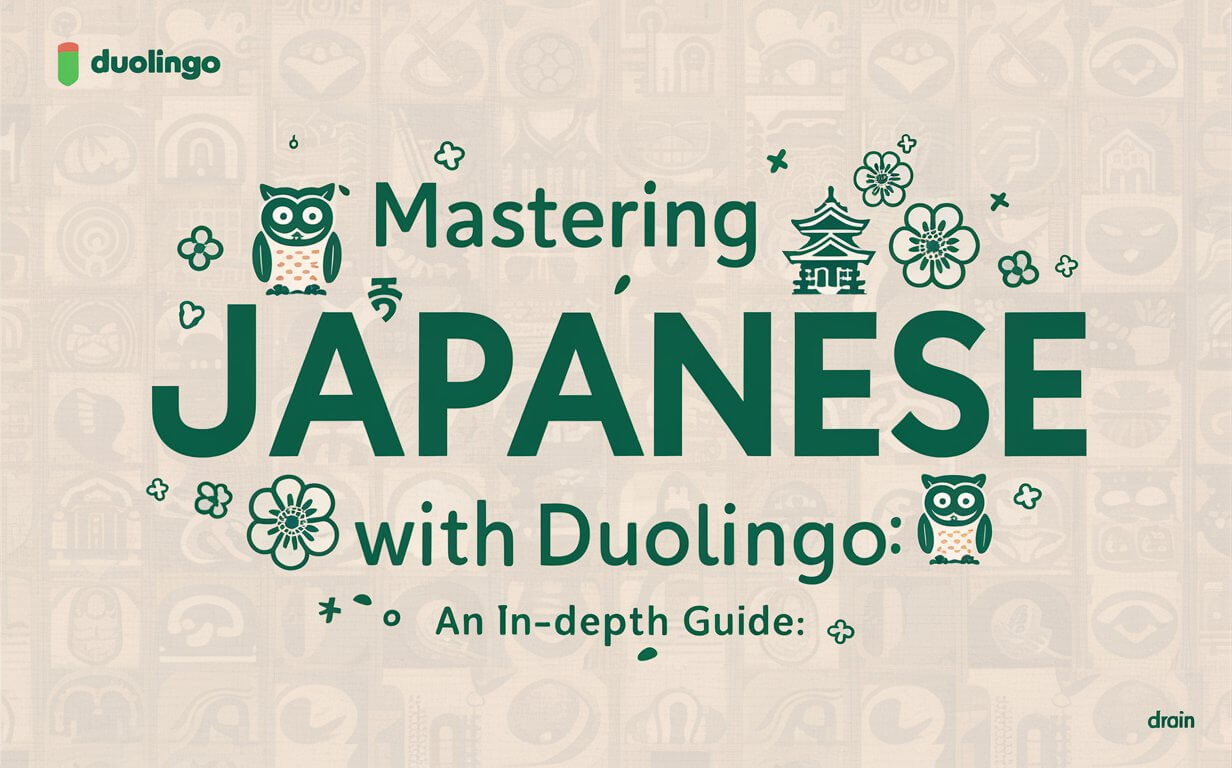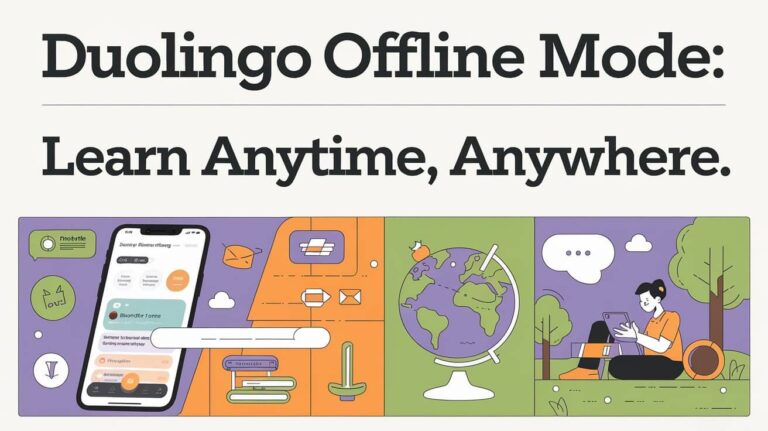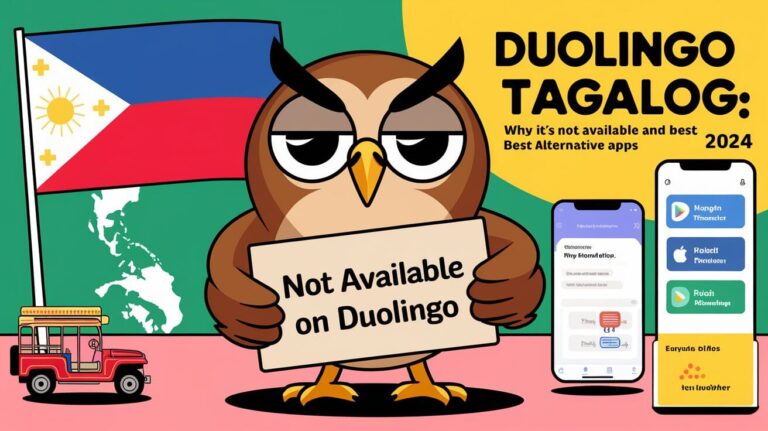Immersing yourself in a new language can open doors to different cultures, perspectives, and experiences. For those embarking on the journey of learning Japanese, the path can be both exhilarating and challenging. Among the myriad language learning resources available, Duolingo has emerged as a popular choice, captivating learners with its gamified approach.
But is Duolingo an effective tool for mastering Japanese?
The short answer is yes but with caveats. Duolingo can be an excellent starting point or supplementary resource for Japanese learners, provided you understand its strengths and limitations, and leverage additional tools to fill the gaps.
In this comprehensive guide, we’ll delve into:
- How Duolingo’s approach to language learning works for Japanese
- The pros and cons of using Duolingo for Japanese acquisition
- Strategies to maximize your learning with Duolingo
- Complementary resources to enhance your Japanese proficiency
Whether you’re a complete beginner or seeking to complement your existing language studies, this guide will equip you with valuable insights and actionable tips to make the most of Duolingo’s Japanese course.
What is Duolingo, and How Does it Work for Japanese?
Duolingo is a free language learning platform that has revolutionized the way people approach language acquisition. It employs a gamified, bite-sized approach to make learning fun and engaging. The Japanese course on Duolingo is designed to teach vocabulary, grammar, reading, writing, and speaking skills through interactive exercises and playful characters.
At its core, Duolingo’s Japanese course is structured around the following principles:
- Gamification: Duolingo incorporates game-like elements, such as rewards, streaks, and leaderboards, to motivate learners and make the experience enjoyable.
- Bite-sized Lessons: The lessons are designed to be short and digestible, making it easier to fit language learning into busy schedules.
- Personalized Learning: Duolingo adapts to each learner’s progress, tailoring the content and difficulty level accordingly.
- Spaced Repetition: The platform uses spaced repetition, a proven technique for effective memorization, by revisiting previously learned concepts at optimal intervals.
- Interactive Exercises: Duolingo’s exercises are interactive, engaging learners through various methods, including translation, listening comprehension, and speaking practice.
Duolingo’s approach to learning Japanese has its pros and cons.
Duolingo’s Strengths for Learning Japanese
Duolingo offers several advantages that make it an appealing choice for Japanese learners:
1. Gamified Learning Experience
Learning a language can be a daunting task, but Duolingo’s gamification elements can make the process more enjoyable and motivating. The app incorporates rewards, streaks, and leaderboards, tapping into the human desire for achievement and competition. This can help learners stay engaged and consistent with their studies.
2. Bite-sized Lessons
One of Duolingo’s standout features is its bite-sized lessons, which are designed to be completed in short bursts of time. This makes it easier to incorporate language learning into busy schedules, whether during a commute, break or while waiting in line.
3. Personalized Learning Path
Duolingo adapts its content and difficulty level based on each learner’s progress, ensuring that the lessons remain challenging yet achievable. This personalized approach can help learners build confidence and avoid feeling overwhelmed or bored.
4. Regular Practice and Review
Duolingo employs spaced repetition, a scientifically proven technique for effective memorization. By revisiting previously learned concepts at optimal intervals, the app reinforces retention and helps learners solidify their knowledge.
5. Fun and Engaging Exercises
Duolingo’s exercises are designed to be interactive and engaging, incorporating playful characters and various formats such as translation, listening comprehension, and speaking practice. This variety can help maintain learners’ interest and prevent monotony.
Duolingo’s Limitations for Learning Japanese
Duolingo has limits, so use it with other resources for a complete learning experience.
1. Limited Vocabulary and Grammar Explanations
One of the primary criticisms of Duolingo’s Japanese course is its limited vocabulary and lack of comprehensive grammar explanations. The app focuses primarily on word recognition rather than in-depth vocabulary acquisition, and it often relies on users inferring grammar rules from examples rather than providing explicit explanations.
2. Lack of Kanji Instruction
Kanji, the logographic character system used in Japanese writing, is a crucial aspect of mastering the language. However, Duolingo’s Japanese course does not provide explicit instruction on kanji, leaving learners to acquire kanji knowledge through sheer repetition and exposure.
3. Sentence-Based Learning Approach
Duolingo’s emphasis on sentence-based exercises may not be optimal for effective word and grammar retention. While this approach can help build contextual understanding, it may not be as effective for solidifying individual vocabulary and grammar concepts.
4. Limited Speaking Practice
While Duolingo offers some speaking exercises, the opportunities for meaningful conversational practice are limited. Developing fluency in a language requires extensive practice with native speakers or language partners.
5. Lack of Cultural Context
Language and culture are deeply intertwined, and Duolingo’s Japanese course may not provide sufficient cultural context or nuances. Understanding cultural aspects can enhance language comprehension and communication abilities.
Tips for Maximizing Your Japanese Learning with Duolingo
While Duolingo has its limitations, there are strategies you can employ to maximize its effectiveness and enhance your Japanese learning experience.
1. Utilize External Resources
Supplement Duolingo with dedicated vocabulary apps like Anki for spaced repetition and more comprehensive vocabulary acquisition. Consult external grammar resources or online forums for in-depth explanations and clarification of complex concepts.
Use resources like “Remembering the Kanji” or WaniKani to learn kanji.
2. Engage in Active Learning
Duolingo’s discussion forums under each exercise can be a valuable resource for clarifying doubts and deepening your understanding. Participate actively by asking questions, sharing insights, and learning from more experienced learners.
Moreover, create your review system for new words and grammar patterns. This could involve creating flashcards, maintaining a notebook, or using a spaced repetition tool like Anki to reinforce your learning.
Another effective strategy is to double-check word meanings and nuances using reliable Japanese dictionaries like Jisho. This can help you avoid misunderstandings and develop a more nuanced understanding of vocabulary.
3. Immerse Yourself in Japanese Content
While Duolingo can provide a solid foundation, true language proficiency requires immersion in authentic Japanese media. Complement your Duolingo studies with manga, anime, Japanese TV shows, podcasts, or movies to expose yourself to natural language usage and cultural context.
Practice speaking with language exchange partners, tutors, or native speakers at Japanese meetups or online communities.
Duolingo Japanese: Ideal for Beginners or Complementary Learning
Duolingo’s Japanese course can be an excellent starting point for beginners who are new to the language. Its gamified approach, bite-sized lessons, and engaging exercises can provide a gentle introduction and help develop a basic foundation.
However, for those seeking to achieve advanced proficiency or fluency in Japanese, Duolingo should be viewed as a complementary tool rather than a comprehensive solution. By recognizing its limitations and supplementing it with additional resources, Duolingo can become a valuable component of a well-rounded Japanese learning strategy.
Mastering Japanese requires dedication, practice, and a combination of resources that fit your learning style and goals.
In conclusion,
Duolingo’s Japanese course can be a useful and enjoyable addition to your language learning journey, but it should be complemented with external resources, active engagement, and immersion in authentic Japanese content. By embracing a multi-faceted approach and understanding Duolingo’s strengths and weaknesses, you can maximize its effectiveness and pave the way for successful Japanese language acquisition.







